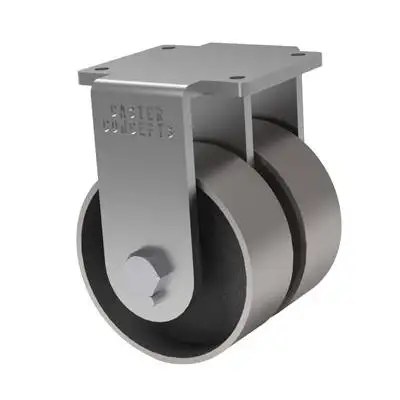

By Doug Backinger
Ergonomic caster designs can reduce push forces by up to 55%, enhancing productivity and minimizing injury risk.
In the current economic climate, where tight labor markets and high capital costs are prevalent, optimizing workplace efficiency within manufacturing is more crucial than ever. This best practices guide focuses on the strategic selection, maintenance, and usage of caster wheels to enhance safety, associate satisfaction, and profitability in the workplace.
Best Practice #1: Proper Heavy Duty Caster Wheel Selection
To effectively address the challenges in today’s workplace, particularly in reducing operator strain injury risk and caster life optimization, a strategic approach towards the selection of caster wheels is essential. It is important to minimize the force required to push or maneuver equipment, while simultaneously choosing materials that optimize wheel life for the floor conditions and movement speed. This can be achieved by selecting caster wheels tailored to specific operational demands. Heavy-duty and ergonomic caster designs play a pivotal role achieving these goals, understanding the engineering tradeoffs ensures your casters will withstand rigorous use while providing ease of movement.
Manufacturing managers should ensure a careful assessment is made of the workplace’s unique requirements, ensuring that the chosen caster wheels align perfectly with the intended use. This requires considering factors such as the weight of the load, the type of flooring, and the overall work environment. By opting for heavy-duty casters, businesses can handle larger, more demanding loads with ease. Additionally, ergonomic caster designs are crucial in preventing workplace injuries. These designs can reduce the physical push force effort required by employees by up to 55%, thereby enhancing their productivity and minimizing injury risk.
This approach not only facilitates smoother operations but also contributes to the health and safety of the workforce by reducing the risk of strain injuries. In the long run, this strategy proves beneficial in enhancing overall productivity and reducing operational costs, a vital consideration in today’s fast-paced and economically challenging work environments.
Continued reading: https://industrytoday.com/industrial-caster-selection-maintenance-best-practices/